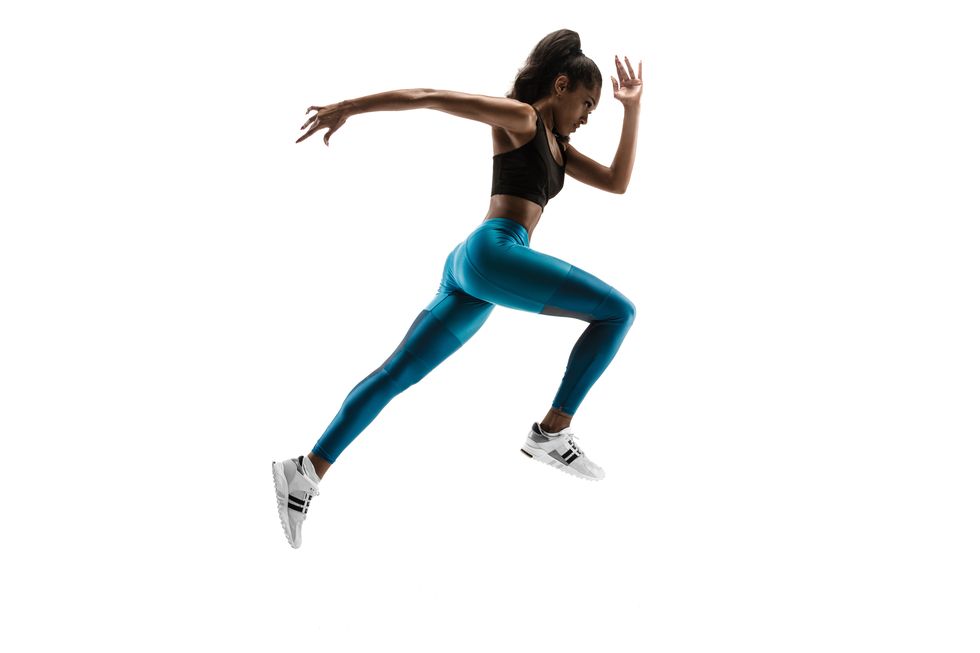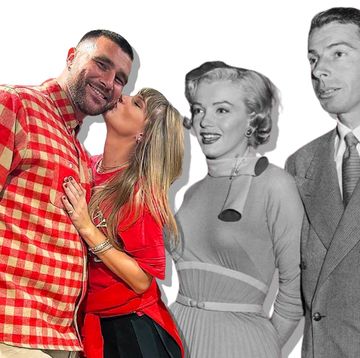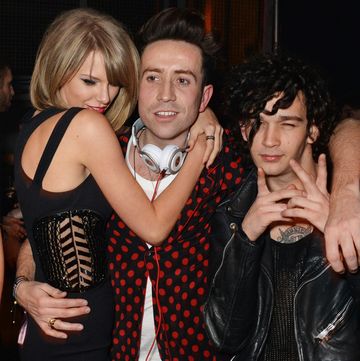Until recently, I lived wellness 24/7. Following a plan I’d bought online, I ate meals of gloopy protein powders, slabs of meat and steamed broccoli, each ingredient weighed to the gram. I went to the gym five times a week, completing stipulated workouts in a bid to look – and eventually feel – better.
And it worked. At first. I became leaner; I was proud that my sharpened willpower could trim my body with all the precision of a Sabatier paring knife. But what control I gained over my body, I lost over my mind. I’d made my flesh such a priority, such an enemy, that months later – though I could tick all the wellness regimen’s boxes (I did the dull workouts and ate the protein-rich food) – I was spending so much time cooking and planking and scolding myself away from all that had previously given me joy, that I lost all other ambition: for my job, my friendships and, eventually, my happiness.
The impact on my body began to make itself known, too: I started walking with a limp, having developed a knee injury from the multiple newfangled weighted squats I was doing without the right technique.
My teeth became covered in plaque, because the protein powder stuck so fastidiously to them. And the wellness body I’d carved myself soon fell prey to the only joy I had left: excessive carb-loading. Soon, the very effort of trying to make myself ‘well’ was in fact making me unwell.
You see, feeling well used to be a passive state of being. We would ask each other, in passing, ‘Are you well?’ Over the past decade, however, this benign, inherently British platitude has taken on an entirely new meaning, because to ‘be well’ today means something entirely different. It is about a lifestyle choice that confers potent social capital. Being ‘well’ has become both an aesthetic objective and a moral imperative, both of which can be achieved through focus, determination and buying a hell of a lot of stuff.
The notion of wellness as a way to optimise you health and happiness, without relying on physicians and illness-orientated treatments, was introduced in Halbert L Dunn’s book High Level Wellness, published in 1961, and took root in California in the 196Os.
Considered radical at the time, early pioneers were mainly male doctors and thinkers who had given up on modern medicine and were instead exploring the fringes of alternative medicine as a way to prevent, not cure, illness. Their brand of ‘wellness’ included diets based on ZenBuddhism (now known as macrobiotic) and mindful workshops where breathing was given as much credence as anti-anxiety medication.
But it was very much a ‘peripheral’ way of life, confined to the slip of northern California around Big Sur where ‘wellness establishments’ such as the Esalen Institute and the Wellness Resource Center were eyed with suspicion by the medical world.‘Wellness’, it appeared, was the final option for those who’d lost all faith in science or who had, quite literally, lost the plot.
Thirty years later, however, and the narrative had changed. The wellness counter-establishment had scaled up. Some of its biggest proponents, including endocrinologist-turned-motivational author Deepak Chopra, had become household names. By the early 199Os, Oprah Winfrey, already a huge star, gave them her anointment, dedicating large swathes of her shows to these quasi-New Age figures. The dial had been turned.
Within a few years, a new form of fitness studio began to make itself known: they were glamorous, aspirational, pushing bodies and minds to the limit of endurance, and with trainers who were almost demigods. The first of its kind was Barry’sBootcamp.
Set up in West Hollywood by former personal trainer Barry Jay, Barry’s used something called high-intensity interval training (HIIT) combined with weights (which was, in fact, inspired by good old-fashioned military training), all set inside a studio that looked more like a sexy nightclub than a gym. Queues ran around the block. Getting a spot was as hard as getting a table at Cafe Gitane.
SoulCycle came next. It revolutionised indoor cycling with instructors who blasted motivational mantra sat its clients. It was a club, a tribe, a place of belonging, whose only requirement was that you let go and let it all out.
By the mid-Noughties, four significant Western world events took place, leaving desperate gaps in people’s lives that were ready to be filled by this new branch of wellness. A health epidemic that saw diabetes, obesity and stress-related illnesses on the rise; the advent of the technological revolution; a global financial crisis that left us working longer hours and taking on multiple jobs; and a young Oscar-winning actor called Gwyneth Paltrow.
In 2008, a newsletter called Goop launched. A mix of travel reviews, nutritious recipes and advice on health and fitness, Goop was not the first of its kind. But it was the first created on the kitchen table of a major Hollywood star.
Paltrow had taken an interest in the alternative side of medicine after losing her father, the director Bruce Paltrow, to a heart attack in 2002 following oral cancer.
After that, she claimed she wanted to be a ‘guinea pig’ for all things wellness-related in order to stave off illness. According to her, it worked. She talked in a strange new language, one that endorsed eliminating white foods, steaming peas and ‘nourishing your inner aspect’. The world laughed...then read, then bought into this New Age world of cleanses, reformer Pilates and jade eggs meant to balance hormones.
Today, Goop is a £190m business with sold-out global conferences and four stand-alone stores. SoulCycle is now worth over $100m, while Barry’s Bootcamp-inspired classes and studios can be found in every major city across Europe. As for the wellness industry: it’s worth an estimated £3 trillion and growing at a rate of 10% each year.
Its growth, however, has also depended on a more-is-more approach. According to Jessica Smith, senior creative researcher at LS:N Global’s The Future Laboratory: ‘Wellness has been in accelerator mode. The sector... has fallen victim to a narrative that tells consumers they must constantly achieve more.’ This has meant that, over time, it has begun to ape the very lives we were escaping.
ClassPass, a monthly subscription service that arrived in the UK in 2015, allowed users to hop between Muay Thai, trampolining and dance classes for discount prices. Gyms started opening for longer: chains such as PureGym, which now has more than a million members, are open 24 hours at most locations, meaning you can get your wellness fix at any time of the day or night.
Yoga, once a gentle, spiritual practice, is now available in dog, silent disco, naked and Bikram formats, the latter promising to burn up to 600 calories per hour, while class stacking – the concept of doing back-to-back workouts – is now widely practised.
Rather than enhancing our lives, wellness is now pushing many of us to the edge. ‘Busyness is a currency and taking on a lot is celebrated,’ says celebrity personal trainer Georgie Okell. ‘The problem is, the physics of your body can’t handle the pressure.’
Rick Miller, principal dietitian at London’s King EdwardVII’s Hospital, agrees: ‘The approach I see clients take when adopting tough wellness regimens is simply adding to their life and health stressors, not managing them.’
The effect is a growing number of people coming to him with extreme cases of burnout, and symptoms including insomnia, caffeine addiction and a resurgence of previously managed eating disorders. ‘I’m seeing very bad cases of burnout, to the point where I’ve had to tell clients that my professional opinion is that they should stop their wellness regimen entirely or their career, family life or long-term health is going to suffer,’ he says.
‘The problem is that sometimes it is too late, as many clients “justify” the symptoms, or it’s reinforced that they are “detoxifying” or just need to “push harder to break a plateau”.’
But constantly striving for more – which Miller puts down in part to a misconception that, with health authorities instructing us to be more active, doing endless amounts of exercise is always going to be good for you – can be harmful.
Mark Golton, consultant physiotherapist and clinic director at Six Physio, has seen a rise in injuries among 25 to 50 year olds , including lower-back injuries and tendon-related shoulder injuries caused by a sudden increase in lifting heavy weights and people ‘smashing it’ in 45-minute HIIT classes.
‘There is a lack of understanding around how much time the body needs to heal and recover. Our minds might be ready to go, but our body needs time to build itself up.’ As well as the addiction that boutique studios like SoulCycle were built on, there is a fear among wellness disciples that, if you stop, you’ll spiral out of control and lose all the hard work you’ve put in.
But it’s not just HIIT classes that are contributing to wellness burnout. Nahid de Belgeonne, a celebrity yoga instructor for more than 2O years, explains how she has seen a rise in ‘status fitness’ – individuals pushing their bodies harder and faster in the pursuit of flexibility and a taut torso. ‘Before, you’d have one teacher who you would learn slowly from. Now, people want a class experience. They want teachers who get them to do headstands they can boast about and post on Instagram,’ she says.
‘You have itinerant students looking for a wow factor in every class they go to. It’s too impatient. People will try the big poses before they’ve got the movement.’ As a result, de Belgeonne sees 'collapsed bodies trying to overstretch themselves’. Yoga, a once-spiritual practice, has evolved in the west into a competitive, marketable experience of slogan T-shirts reading ‘Namaste inBed’ and ‘Eat. Sleep. Yoga. Repeat’. ‘Yoga wasn’t meant to be about fitness. You were meant to change yourself in some way by being considered in your practice, then take that out into the world in your day-to-day actions,’ says de Belgeonne.
Wellness technology, meanwhile, has exacerbated the issue. Fitness monitors – another rubric by which to measure our achievements – can provide arbitrary and endless targets, asAlan Tomlinson, professor of Leisure Studies at the University ofBrighton, explains: ‘These goals set by pseudo-professionals can become counterproductive because they create certain forms of stress through the excessive expectations individuals put on themselves.’ There are also now small bodies of research looking into the detrimental effects of fitness trackers, which have been linked to eating disorders.
Sociologist Barbara Ehrenreich argues in her book Natural Causes that wellness encouraged us to treat our bodies like 'an ever more perfect self-correcting machine capable of setting goals and moving toward them with smooth determination.’But our bodies aren’t machines and, even if they were, don’t we already have enough programmes to run?
This couldn’t be further from the case in Silicon Valley, where techstars such as Twitter’s Jack Dorsey very publicly endorse intermittent fasting, which is restricting the time you eat meals in order to let your body recharge (he claims to fast throughout the weekend and only eat dinner), and biohacking – optimising human performance by approaching it the way you would a machine, such as a robot or a rocket ship.
But for Claire Mysko, CEO of the National EatingDisorders Association in the US, this extreme approach to wellness is worrying: ‘Promotion of intermittent fasting and the connection to biohacking does mirror a lot of what we hear people with eating disorders talking about,’ she explained on an episode of Kara Swisher’s Recode Decode podcast. ‘The whole framing of food and eating as a way of achieving perfection or optimum productivity... all of this is familiar language as someone who works in the field of eating disorders.’
So where does wellness go from here? A slower pace certainly seems preferable and it’s what trend forecaster LS:N Global is calling ‘conscious deceleration’. ‘There is a growing desire to replace a quick-fix mentality by focusing on slowing down to build up long-term endurance and allowing space to breathe, both physically and metaphorically,’ says Smith.
As we enter a new decade, this outlook is hopeful – and so am I. My relationship with my own Wellness, upper-case W, has thankfully changed. I’m trying to be more present in the physical world, going for long walks in lieu of stints in the gym, and cooking food for pleasure, not fuel. I’m also, most importantly, trying not to beat myself up so much if I don’t get around to following my new rules. Because when we flip capital-W wellness on its head, we get capital Me. Me-ness. It’s not a thing yet, but maybe it should be?
Like this article? Sign up to our newsletter to get more articles like this delivered straight to your inbox. SIGN UP



















